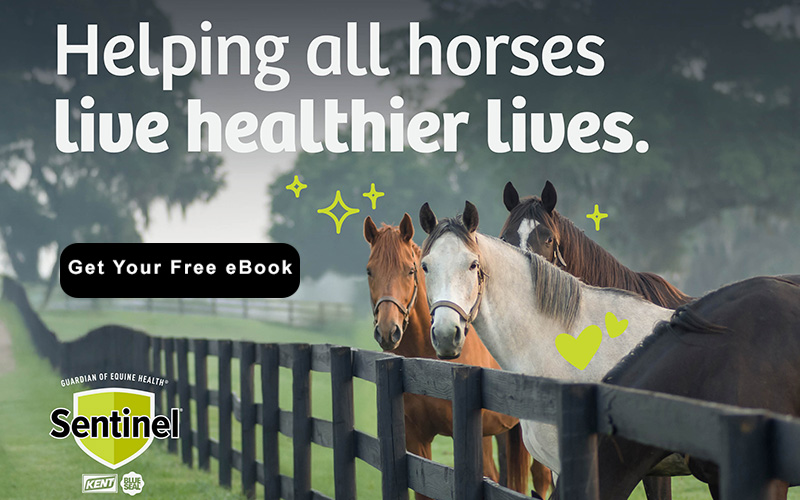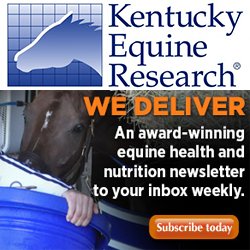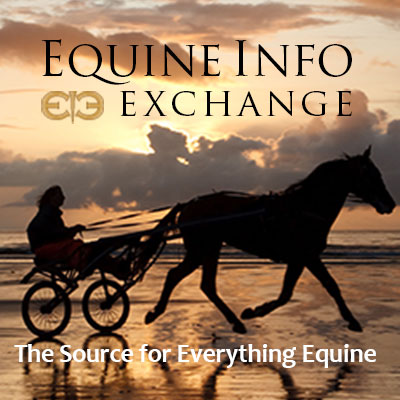Health & Education
We all want the best care possible for our horses. The Heath & Education section covers both Learning Institutions, Organizations as well as many sources for equine assistance including Veterinarians and Farriers.
For those who want a to formally study horses, the Education section includes College Riding, Equine Studies, and Veterinary Schools. Learn about the wide variety of horses in the Horse Breeds section. Supplements and Treatments Therapy are also included in the section.
Everyone can learn from Fine Art and there are some specialty Museums that might surprise you.
Horses as a therapy partner enrich the lives of the disabled. These facilities are listed in our Therapeutic Riding section. To help children and young adults build confidence and grow emotionally, please see the resources available on the Youth Outreach page.
Looking for a place to keep your horse? You can find it in the Horse Boarding section. Traveling? Find a Shipping company or Horse Sitting service if your horse is staying home!
Want to stay up to date with the latest training clinics or professional conferences? Take a look at our Calendar of Events for Health & Education for the dates and locations of upcoming events.
Do we need to add more? Please use the useful feedback link and let us know!
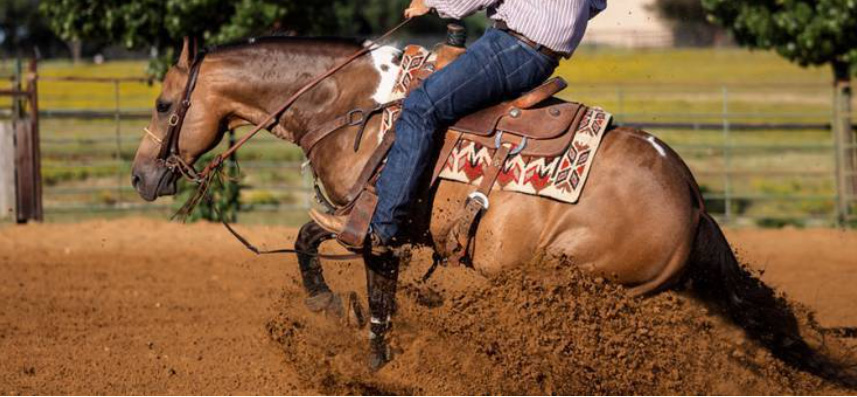
by Kentucky Equine Research Staff
Transrectal ultrasound can reveal pathologic changes in the sacroiliac (SI) joint, including problems that may be present in horses that owners perceive as sound. Although ultrasound only images the caudal portion of the SI joint, or the section nearest the tail, one study found that changes detected in this region were representative of structural changes throughout the entire joint.* Based on these findings, the researchers concluded that transrectal ultrasound is a valuable first-line diagnostic tool for assessing SI pain.
The SI joint is the articulation between the transverse processes of the first and second sacral vertebrae and the wings of the ileum. The sacral vertebrae are located at the base of the spine within the pelvis, just before the bones of the tail. Horses have two SI joints, one on the right and left side of the pelvis. Like any joint, horses can suffer injury and pain at this point, resulting in poor performance.
“Diagnosing SI pain can be challenging for veterinarians, as lameness from the SI joint can appear similar to thoracolumbar or lumbosacral pain, mild hind limb lameness due to proximal suspensory ligament inflammation, or even mild ataxia. Further, the joint is deep in the body, making it challenging to image,” said Kathleen Crandell, Ph.D., a nutritionist for Kentucky Equine Research.
During any musculoskeletal disease workup, ultrasound is a powerful diagnostic tool. In the case of the SI joint, however, transrectal ultrasound can only reach the caudal third of the SI joint. In a study by Mathys and colleagues, 25 SI joints from 15 Warmblood horses with no owner-reported lameness were examined by both computed tomography and ultrasound. Abnormalities were observed in 100% of SI joints using computed tomography and 92% of SI joints using ultrasound. Changes included osteophytes (abnormal bone growth in a joint secondary to osteoarthritis), joint effusion (fluid accumulation), sclerosis, subchondral bone lesions, and evidence of bone remodeling. Computed tomography images included the entire joint, and researchers found that the most severe changes occurred caudally, with only about one-quarter of the changes occurring cranially (the part of the SI joint closest to the head).
“A significant correlation between computed tomography findings in the caudal aspect of the joint and the entire joint was noted, meaning that the pathologic changes observed in the caudal one-third represent the changes in the entire joint in almost half of all horses. Examining the caudal one-third of the joint reachable by transrectal ultrasound, a much more economical and widely available diagnostic tool than computed tomography, can be used as a first-line tool to assess the SI joint,” explained Crandell.
As noted by the researchers, the abnormalities reflect joint remodeling, which means that strategies used to optimize joint health in other areas of the body, such as the stifles, hocks, knees, and ankles, also apply to the SI joint. Consider prophylactically administering oral joint health supplements to horses before signs of disease manifest. Kentucky Equine Research offers research-proven joint supplements containing a combination of glucosamine, chondroitin sulfate, and hyaluronic acid.
“This is important because the owners of the horses included in this study did not report any sign of lameness, yet almost all the horses had abnormalities of the SI joint diagnosed by computed tomography and/or ultrasound in this study. SI joint disease is highly prevalent and, while it may be part of normal aging or adaptation to training, taking steps to support these joints may allay performance issues,” advised Crandell.
<*Mathys, R.A., T.R. Schmitz, H. Geyer, N. Borel, M. Hilbe, S. Ohlerth, and A.S. Bischofberger. 2023. Multi-detector helical computed tomography, transrectal ultrasonography, and histology of the sacroiliac joint: A comparative study in adult Warmblood horse cadavers. Animals (Basel) 15(13):1995.
Reprinted courtesy of Kentucky Equine Research. Kentucky Equine Research is an international equine nutrition, research, and consultation company serving horse owners and the feed industry. Our goals are to advance the industry's knowledge of equine nutrition and exercise physiology, apply that knowledge to produce healthier, more athletic horses, and support the nutritional care of all horses throughout their lives. Learn more at Kentucky Equine Research.
There a more informative articles in our section on Health & Education. While you're here be sure to visit our Curated Amazon Store.
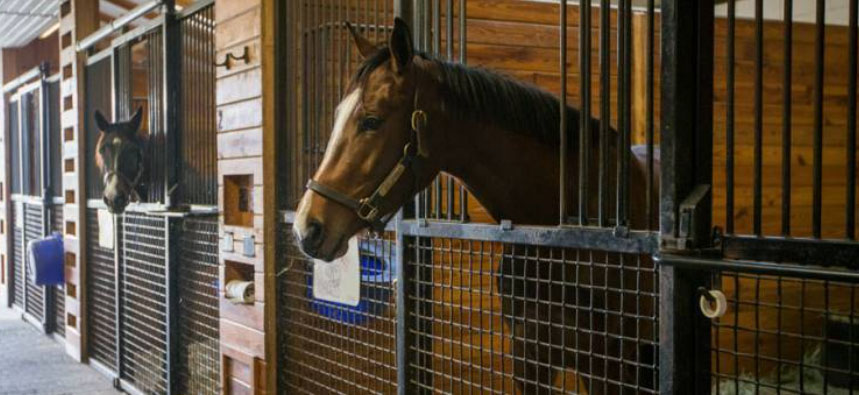
by Kentucky Equine Research Staff
The type of bedding you provide affects your horse’s health and comfort, as well as your bottom line. From straw and pine shavings to paper and peat moss, the perfect bedding has yet to be discovered. One of the most recent options available is hemp hurd, a byproduct of hemp fiber production.
Two studies presented at the 2025 Equine Science Symposium examined the physical characteristics of hemp hurd and its potential as a horse bedding material.*,**
A research group from the University of Kentucky investigated the water-holding capacity, bulk density, and ammonia-binding capacity of several fiber-type hemp hurd varieties. The study found differences in physical characteristics based on variety and particle size (large vs. small), suggesting that some types of hemp hurd may be better suited for bedding than others.
The second study compared the water absorbency and fecal coliform (Escherichia coli) counts of hemp hurd bedding with two commonly used alternatives: pine shavings and cut straw.
To measure fecal coliform levels, each bedding type was mixed with manure and dissolved urea (simulating urine), then composted for one week. The compost mixtures were submerged in water to create a “compost tea,” which was tested for E. coli using colony-forming units (CFU) as the measurement. Cut straw produced the highest CFU counts (i.e., more E. coli), while hemp hurd resulted in the lowest.
To evaluate absorbency, all three beddings were soaked in water, drained, and weighed. Hemp hurd was twice as absorbent as pine shavings and only slightly less absorbent than cut straw.
“These studies highlight the positive attributes of hemp hurd as a bedding for horses. Further research on the use of hemp hurd bedding in practical and commercial settings is warranted,” said Catherine Whitehouse, M.S., a nutrition advisor for Kentucky Equine Research.
“Don’t ignore the importance of bedding selection to optimize horse comfort and health, waste disposal and management, as well as barn hygiene. Appropriate bedding selection is particularly important for horses with equine asthma,” said Whitehouse.
Do you have questions about the best management and nutritional strategies for horses with equine asthma? Contact a Kentucky Equine Research nutrition advisor to learn more.
*Lee, A., A. Endfinger, R.C. Pearce, and L.M. Lawrence. 2025. Physical characterization of hemp hurd varieties to assess suitability as bedding. Journal of Equine Veterinary Science 148:105553
**Williamson, K., A. Jaqueth, K. Ely, G. McGlinch, and S. Jacquemin. 2025. Potential of hemp hurd bedding for use in equine operations. Journal of Equine Veterinary Science 148:105436.
Reprinted courtesy of Kentucky Equine Research. Kentucky Equine Research is an international equine nutrition, research, and consultation company serving horse owners and the feed industry. Our goals are to advance the industry's knowledge of equine nutrition and exercise physiology, apply that knowledge to produce healthier, more athletic horses, and support the nutritional care of all horses throughout their lives. Learn more at Kentucky Equine Research.
There a more informative articles in our section on Health & Education. While you're here be sure to visit our Curated Amazon Store.
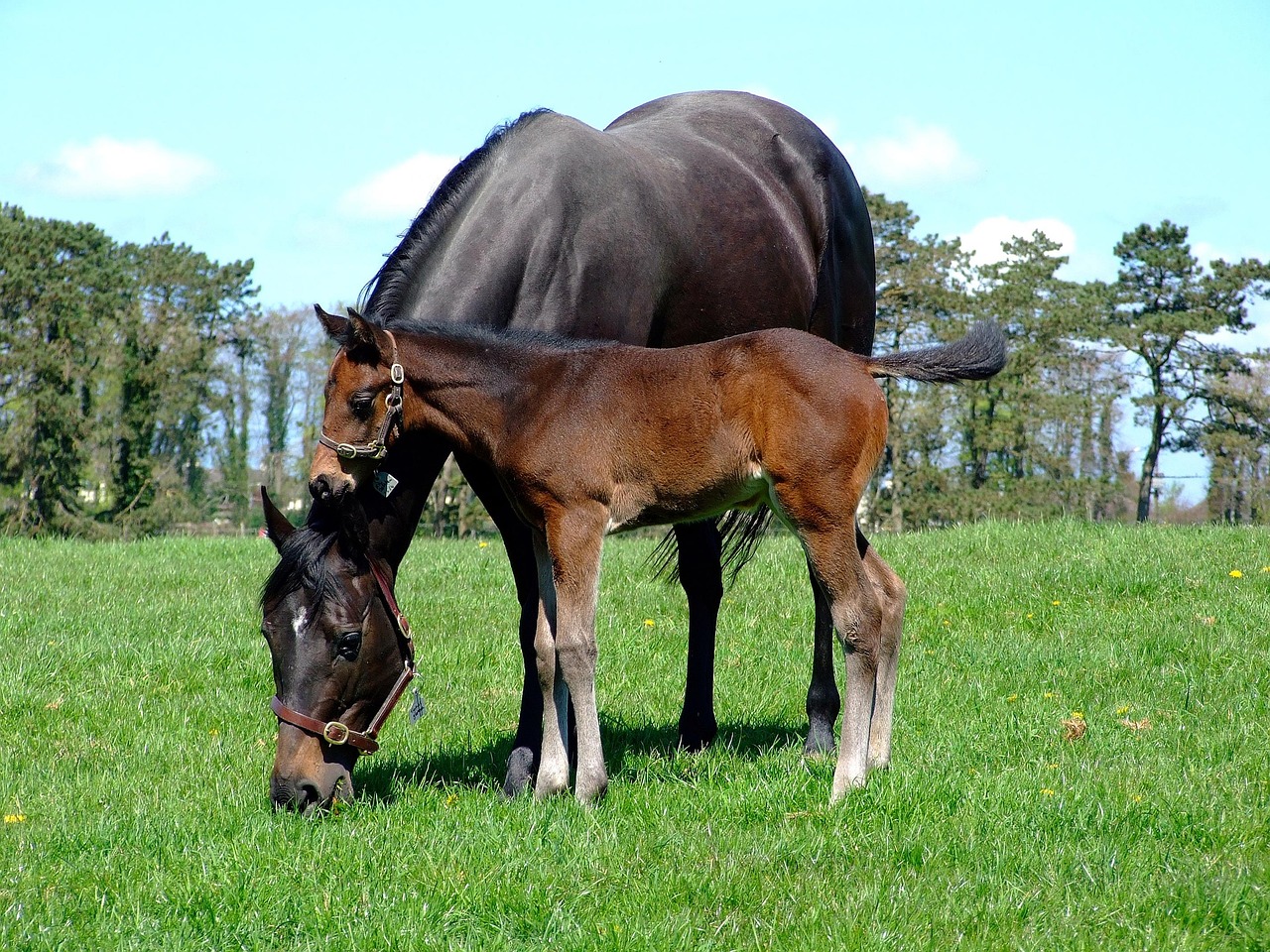
Horses don’t just munch on grass and call it a day.
They’ll wander a bit first, sniffle stuff around, nibble a little, and sometimes latch onto the same little patch like it’s the most delicious thing they’ve ever tasted. One horse might be really into clover, the other will hunt down every last dandelion – some horses even like mint or wild herbs. A pasture is to a horse what a buffet is to you.
But, as tasty as some buffets can be, they aren’t exactly healthy. Well, some are. But not all of them. This has much to do with the fact that some snacks are full of ‘the good stuff’, while some are just packed with nasties.
So this article is for you, the owner, so that you can see (and pay close attention) to the difference between which food is safe, and which isn’t.
Nutritional Impact of Common Pasture Snacks
As humans, horses are picky eaters. They won’t just eat any old grass that’s in front of them. Sure, they will if they HAVE TO. But only so in order to survive. You can be sure they won’t be happy about it. Not one bit.
In order to create healthy (and tasty) snacks, you need to put in the ‘good stuff’ into them (e.g., clover, dandelions, plantains, chamomile, mint, etc.).
This variety is very good for horses because it keeps their digestive system active the way nature intended. If the snack is tasty and healthy, then the horse is happy. This means less stress.
As far as nutritional values, these types of natural snacks are different from carrots, apples, and packaged treats you might usually give them. Pasture snacks have subtle amounts of vitamins and minerals, but because they graze, horses get them in steady amounts.
Hand-fed treats, on the other hand, are sweeter, and they’re given in bursts. Both are good and both deserve to have their place, but their roles aren’t the same.
This is why you’ll see a lot of horse owners browsing horse stalls for sale online to look and ask for features that make feeding routines easier to manage (e.g., safe hay racks, well-placed feed doors, etc.).
Safe Pasture Snacks vs. Risky Ones
Not every plant on the pasture is safe for your horse, so let’s see what’s okay, what’s risky, and what to be especially careful with.
Safe Snacks
There’s a good number of plants horses can safely eat while they’re grazing. Clover is one of the most common ones, and it’s very beneficial because it’s full of protein, which supports muscles and overall condition. Dandelions are another excellent choice, although many people see them as nothing more than weeds.
They’re packed with vitamins A and C, as well as minerals like calcium and potassium (great for bones and healthy teeth). Horses find them delicious, and they’re surprisingly healthy.
Wild herbs like plantain and chamomile have small digestive or even calming benefits. Mint is another herb that’s pretty popular with horses, but it’s not a big source of nutrition. Still, it’s safe and refreshing.
Risky Snacks
Even safe snacks can become risky if they’re eaten in excess, so make sure your horse always snacks in moderation.
Clover – safe in moderate amounts – is dangerous if a horse eats too much. It can cause slobbers, which is a condition caused by a fungus that (sometimes) grows on clover.
Lush spring grass is risky from the start because it contains a lot of sugar, which can trigger laminitis in sensitive horses.
Buttercups are another risk, although a lot of horses avoid them because they’re bitter. They’re actually mildly toxic if they’re eaten fresh, and they can irritate the digestive system.
Acorns are a seasonal risk in areas with oak trees. Some horses ignore them, but others will eat enough of them and cause serious poisoning. Horses are naturally curious, but this curiosity sometimes endangers their health.
Plants You Need to Be Careful with
Weeds and wild plants should never be a part of a horse’s diet.
Ragwort, horsetail, bracken fern, and yew are examples of toxic plants. Horses usually avoid them if they have plenty of good forage to eat, but if grazing is limited, they might start nibbling on something toxic simply because they’re bored.
Hunger, of course, would be the other reason.
Even small amounts of these plants can cause serious and long-term damage, so make sure to walk past pastures regularly and remove anything that might be dangerous.
Conclusion
Horses don’t care about nutrition labels and feed charts. As picky as they are, they would sometimes wander into a junk food aisle (if you’d let them) and make themselves sick. Think of them like big children. Would you leave it up to them to pick what they want?
Sure, in nature, they’d have no trouble eating what nature has intended them to eat. But here, in civilization, they’re constantly surrounded by a lot of different options – some of which aren’t that great for them, with some even being outright dangerous.
Remember that it’s up to you to prevent this, and every acorn they eat IS ON YOU. Every digestive problem a wild plant causes is also on you.
Do you research and inspect the pastures regularly to keep your horse(s) safe and happy.
There are more interesting articles in our section on Health & Education.
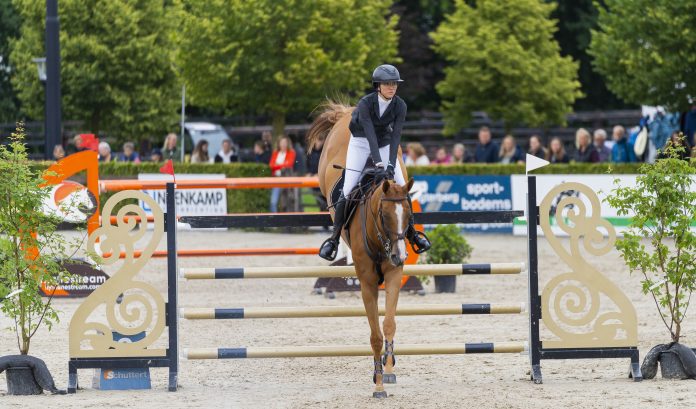
How would you help a rider who struggles with measuring and riding through in-and-outs or combinations?
Each week we ask trainers a question and gather their answers for you. These trainers have a range of experience, backgrounds, and focus points of their programs, so the answers have as much variation as you would expect and also probably much more similarity.
This week’s question posed is: How would you help a rider who struggles with measuring and riding through in-and-outs or combinations?
Here are their answers:
“The key to measuring correctly into an in-and-out (or any related distance) is to measure to the out element. On the approach, the rider should set their sight to the top/back rail of the out and the focal point in one big plane of vision. Keeping eyes set through the in, count and measure from the same quality canter rhythm. If you measure to the out, you’ll always find a reasonable distance to the in!” -Claire Gordon-Neff
Read more from Claire here.
“I’d begin with just a simple one-stride, helping the rider understand how their horse relates to two fences at a time. Once that feels consistent, we’d build into longer combinations. As they ride through, I’d have them count strides out loud, it keeps them present, prevents getting lost in the line, and naturally encourages breathing. Most importantly, I’d remind them to ride the stride they feel, since every horse has its own rhythm and balance.” -Katie Jones
“I find that the most common habit from riders approaching combinations is pulling when they second-guess their eye. We’ve all been there! Not seeing the right distance into the combination or in-and-out, and then adding a stride in and having a launch distance or bad chip out, even a refusal.
A trick that I find helpful is to have riders count down from 3 to the first jump (3-2-1) so they don’t have the opportunity to change their minds at the last minute. Once they land in the combination, count up (1-2, or 1-2-3, etc., depending on the striding). Developing the habit of counting down in and then counting up on the way out helps riders trust their eye initially and rely on their pace, and they’re less likely to doubt themselves at the base.” -Ariel Univer
Read more from Ariel here.
“When a rider struggles with measuring and riding through in-and-outs or combinations, I like to bring the focus back to rhythm and track. Instead of overthinking the stride, I have them practice on poles and low fences where they can feel the natural step of their horse. Once the rider gains confidence in keeping a consistent pace and straight line, the distances begin to come up naturally, and measuring becomes less intimidating.” –Michael Meyers
This article originally appeared in the Trainer Tuesday Series from The Plaid Horse Magazine and is published here with permission.
There are more informative articles in our section on Health & Education.
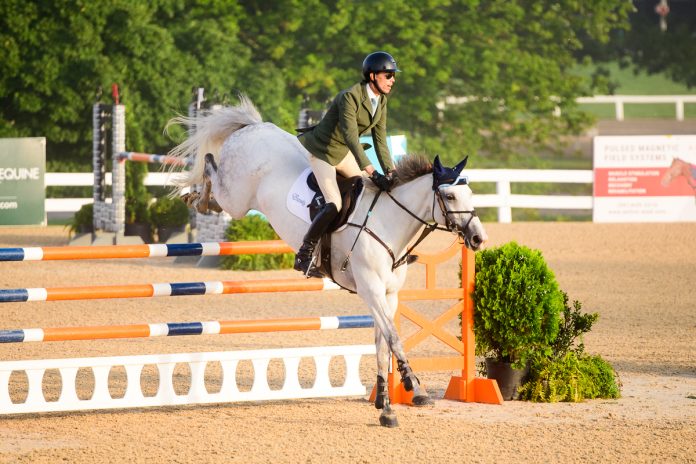
Brought to you by With Purpose: The Balmoral Standard
When most riders picture a gymnastic line, they think of building height as they go. Start small, get the horse organized, and finish with the biggest effort. At Balmoral, however, Carleton and Traci Brooks often flip this expectation. Instead of finishing on a high oxer, they sometimes end with the smallest jump in the line. Why? Because not every horse benefits from ending on a higher jump.
Rethinking the Traditional Gymnastic
Traditional gymnastics are designed to build confidence, strength, and technique. A classic line might begin with a crossrail, then an oxer, then a vertical that gradually gets taller. By the end, the horse is meant to feel successful at a greater height and effort.
But what about the horse that builds too much? The hot one who gets quick through the line, or the green horse who begins to worry? For these horses, finishing big can create anxiety instead of confidence. That’s where descending gymnastics, ending with the lowest fence, come in.
Who Benefits Most
Descending gymnastics are particularly useful for:
- Hot Horses: The kind that rush down lines, throwing their rider onto the defensive.
- Young Horses: Those still learning the ropes, who need to end on a calm, positive note.
- Tense Horses: The ones who start anticipating, bouncing through the line with more adrenaline than rhythm.
- By finishing with a small fence, these horses settle down, take a breath, and learn that not every line ends with maximum effort.
Building the Line
A typical descending gymnastic might start with a crossrail, build to a small vertical or oxer in the middle, and then drop back down to a crossrail at the end. The line still serves its purpose, teaching straightness, encouraging bascule, and keeping the rider focused, but the finish is soft.
This kind of exercise tells the horse: you don’t need to escalate every time. It conditions them to stay rideable and quiet, rather than anticipating a big finish.
What Riders Learn
Descending gymnastics aren’t just for the horse’s benefit. They also teach riders valuable lessons:
- Resist the Urge to Chase: Riders often push harder as jumps get bigger. Ending small reinforces patience.
- Ride the Rhythm, Not the Height: With the last fence tiny, the focus shifts to pace and track instead of “surviving” the finish.
- Learn to Relax, Too: Just as the horse takes a breath at the end, the rider practices letting go of tension.
Avoiding the Trap of Bigger = Better
It’s easy to assume progress means raising fences higher and higher. But Balmoral’s philosophy reminds us that not all horses, or riders, thrive under that model. Sometimes, progress looks like stepping down, using thoughtful exercises to teach relaxation instead of escalation.
In the Show Ring
A horse that’s trained with descending gymnastics often shows a noticeable difference in the ring. Instead of charging the last element of a combination, they stay soft through the finish. Instead of expecting every question to get harder, they stay open to listening. That difference can be the margin between a rushed, tense round and a polished, winning trip.
Not every gymnastic needs to build to a grand finale. By finishing small, riders can teach their horses to stay calm, confident, and consistent. And in the long run, that foundation of rideability will carry far more value than one big jump at the end of a line.
Want to take your riding and horsemanship to the next level? With Purpose: The Balmoral Standard distills decades of wisdom from Carleton and Traci Brooks into practical, thoughtful lessons you can apply every day at home, in the schooling ring, and in the show ring. From training philosophies to mental game strategies, the book offers riders of every level a blueprint for success built on empathy, structure, and purpose.
With Purpose: The Balmoral Standard is available on Kindle and Audible.
This article originally appeared in The Plaid Horse Magazine and is published here with permission.
There are more informative articles in our section on Health & Education.
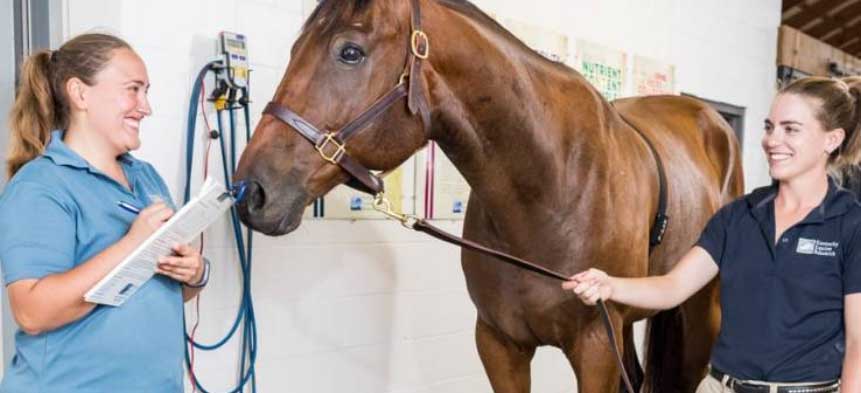
by Kentucky Equine Research Staff
Ohio has one of the largest horse populations in the United States, with close to a quarter million horses. A recent survey of Ohio horse owners and enthusiasts gathered data on current management practices, with the goal of identifying research and educational opportunities to enhance equine welfare. In this article, Kentucky Equine Research nutritionist Ashley Fowler, Ph.D., addresses some of the survey findings related to nutrition, offering practical insights to help horse owners improve the health and well-being of their animals.
General Information
A total of 1,422 Ohio residents responded to the 52-question survey, the majority of whom were horse owners. Respondents reported owning a wide variety of breeds, with Quarter Horses being the most common (29%), followed by Thoroughbreds (9%), Paints (8%), Warmbloods (7%), and Miniature Horses (7%). Most horses (21%) were between six and ten years of age.
In terms of housing, 32% were group-housed on pasture, 31% were stalled with unlimited turnout, and 13% were either stalled full-time or had limited turnout. Despite this, horses typically had access to grazeable pasture for only about six months of the year.
Additionally, 27% of horses were classified as “at maintenance,” receiving only voluntary exercise.
Feeding Hay and Concentrates
Most survey respondents (96%) reported offering concentrates that were fed either by weight or visual estimation. The primary reason owners fed concentrates was to “meet nutrition requirements not met by forage alone,” such as vitamin, mineral, and protein needs, as well as energy requirements.
“As the researchers discussed, a limitation of this question is that horse owners were not asked to specify what kind of concentrate they fed. Ration balancers, complete feeds, and other commercial concentrates are fed for different reasons,” explained Fowler.
The reasoning for feeding a concentrate is sound, according to her, as forage rarely provides all the required nutrients. Ration balancers provide important vitamins, minerals, and high-quality protein and are appropriate for horses that do not need additional calories, such as horses in light work or easy keepers. More energy-dense concentrates help provide additional calories beyond what forage can provide, in addition to filling gaps in minerals, vitamins, and amino acids.
Forage was primarily fed by flakes, bales, or “armfuls” rather than by weight.
Read more: Horse Management Survey Results: A Nutritionist’s Perspective
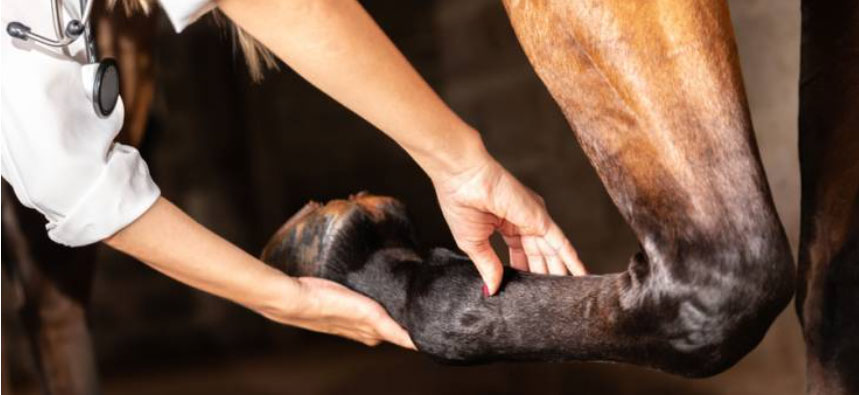
by Kentucky Equine Research Staff
Veterinary researchers recently conducted a comprehensive review of 22 studies using platelet-rich plasma (PRP) to treat tendon and ligament injuries in horses.* These soft-tissue injuries are major contributors to lameness and result in substantial economic losses for both owners and trainers. Despite growing interest, limited controlled clinical data support the efficacy of PRP.
PRP is a type of orthobiologic therapy derived from the horse’s own blood. The blood sample is processed, usually by centrifugation, to create a concentrated suspension of live platelets and white blood cells. This mixture is then injected directly into the horse’s injured soft tissue, guided by ultrasound.
“After the PRP is injected, it transforms into a platelet-rich ‘gel’ that releases growth factors and anti-inflammatory mediators,” explained Catherine Whitehouse, M.S., a nutrition advisor for Kentucky Equine Research.
Those molecules then attract nearby stem cells and promote regenerative mechanisms that ultimately help repair and heal damaged tissues.
During the researchers’ review of the studies, they asked six questions that may help owners better understand PRP.
- Is PRP safe in horses?
Yes, across all 22 studies, no significant adverse effects were reported following PRP treatment.
- What is the most common way of producing PRP?
Across the 22 studies, fresh whole blood volumes collected from horses ranged from 15 mL to 300 mL, with most researchers using between 50 and 81 mL. The standard method for producing PRP involved a double-centrifugation protocol; however, alternative approaches were used, including single-centrifugation semi-automated kits and gravitational filtration systems.
- What is the optimal concentration of platelets?
This remains unknown. The platelet concentration in PRP in the studies ranged from 100 x 103 to 1,370 x 103 platelets/ìL. When reported (only nine of the 22 studies reported concentration), this value alternated between 1.3 to 8.7 times the concentration of platelets in whole blood.
- What “dose” of PRP should be injected and how often?
Veterinarians injected platelet-rich plasma directly into the lesions in all studies. The volumes varied dramatically, from 1 mL to 12 mL. Most studies used between 2 mL and 5 mL, and most adjusted based on the size of the lesion on ultrasound. Most studies used a single injection, but one study performed three injections into the same lesions at two-week intervals.
“Considering that the concentration of platelets varied markedly in each PRP preparation, the difference in injected volume further complicates the issue of decoding the optimal dose,” explained Whitehouse.
- What were the clinical outcomes?
Platelet-rich plasma yielded positive results in 18 of the 22 studies (86%), with researchers citing improvements in lameness, ultrasound appearance, and recovery times. However, researchers only reported positive results in two of the four randomized clinical trials when PRP was used as the only treatment. In the two randomized clinical trials with positive results, lameness scores decreased by 30% to 60% compared to 10% to 25% in the control groups.
The reviewers added, however, “PRP appears to be effective at promoting short- and medium-term recovery, but its long-term efficacy may depend on factors such as injury severity and concurrent therapies.”
- Can PRP be combined with other therapies?
Yes. All case series and clinical trials included in the review combined PRP with controlled exercise programs to enhance healing.
In some studies, PRP was also paired with mesenchymal stem cells or bone marrow aspirate concentrate. However, current data are insufficient to determine whether these combinations offer added benefit. Further research on combining PRP with other regenerative therapies, such as extracellular vesicles or gene therapy, is needed.
“Standardized reporting and methodological rigor of PRP studies should be improved to ensure reproducibility and facilitate evidence-based veterinary practice,” concluded the researchers.
“To support the horse’s musculoskeletal system, including soft-tissue structures and joints, offer oral joint health supplements,” recommended Whitehouse.
*Carmona, J.U., and C. López. 2025. Efficacy of platelet-rich plasma in the treatment of equine tendon and ligament injuries: A systematic review of clinical and experimental studies. Veterinary Science 12(4):382.
Reprinted courtesy of Kentucky Equine Research. Kentucky Equine Research is an international equine nutrition, research, and consultation company serving horse owners and the feed industry. Our goals are to advance the industry's knowledge of equine nutrition and exercise physiology, apply that knowledge to produce healthier, more athletic horses, and support the nutritional care of all horses throughout their lives. Learn more at Kentucky Equine Research.
There a more informative articles in our section on Health & Education. While you're here be sure to visit our Curated Amazon Store.

Editor's Note: This is an important topic for us. We had a horse die from Potomac Horse Fever in New York State even though he was vaccinated, but it is still important to vaccinate your horses and watch for signs of this potentially deadly disease.
As summer heats up, so does concern over a serious equine illness: Potomac Horse Fever (PHF). Once considered rare in Canada, PHF is now appearing more frequently prompting veterinarians and horse owners to stay alert.
What Is Potomac Horse Fever?
Potomac Horse Fever (PHF), also known as equine neorickettsiosis or equine monocytic ehrlichiosis, is a serious intestinal disease that affects horses, especially during the warmer months. It was first identified in 1979 near the Potomac River in Maryland, but cases have since been reported across North and South America— including a growing number in Canada. PHF is caused by a type of bacteria called Neorickettsia. For many years, the only known culprit was Neorickettsia risticii. However, researchers in Canada and USA have recently discovered a new species, Neorickettsia findlayensis, in horses showing signs of PHF.
These bacteria live inside tiny parasitic flatworms (called trematodes) that infect aquatic insects like mayflies, caddisflies, and dragonflies. Horses can become infected when they accidentally eat these insects—often while grazing or drinking from contaminated water sources. Once inside the horse’s digestive system, the bacteria are released and begin to invade the lining of the colon and cecum. From there, they can enter the bloodstream and infect immune cells, leading to symptoms like fever, diarrhea, and in severe cases, laminitis.
PHF is typically a seasonal disease because the insects that carry the bacteria are most active in summer and early fall.
Why the Sudden Rise?
According to Dr. Luis Arroyo from the Ontario Veterinary College, climate change and shifting insect populations may be contributing to the spread of PHF into new regions, including parts of Ontario where it wasn’t previously seen. Increased awareness and better diagnostic tools are also helping identify more cases.
Signs to Watch For
PHF can come on suddenly and progress quickly. Common symptoms include:
- High fever
- Lethargy
- Loss of appetite
- Diarrhea
- Colic-like symptoms
In severe cases, laminitis (a painful hoof condition) or even abortion in pregnant mares Early detection is critical. If your horse shows any of these signs, contact your vet immediately.
Diagnosis and Treatment
Diagnosis typically involves blood and fecal tests, including PCR testing. Treatment usually includes oxytetracycline, an antibiotic that can be effective if given early. Supportive care like IV fluids may also be needed.
Prevention Tips
Talk to your veterinarian to learn about available vaccines and how well they protect against different strains of PHF, including newer ones found in Canada.
Other preventive steps include:
- Turning off barn lights at night to avoid attracting insects
- Covering water troughs and feed bins
- Cleaning up dead insects around the barn
- Avoiding turnout near ponds, rivers or streams during peak insect season
PHF is a serious but manageable disease. With vigilance, early intervention, and preventive care, horse owners can help protect their herds.
Resource Links
Potomac Horse Fever (PHF) Webinar
Potomac horse fever in Ontario: Clinical, geographic, and diagnostic aspects.
Arroyo LG, Moore A, Bedford S, Gomez DE, Teymournejad O, Xiong Q, Budachetri K, Bekebrede H, Rikihisa Y, Baird JD.
Can Vet J. 2021 Jun;62(6):622-628. PMID: 34219771; PMCID: PMC8118184.
This article originally appeared on Equine Guelph, The University of Guelph and is published here with permission.
You can find more informative articles in our section on Health & Education.
While you're here, find some perfect items for your horse! Visit our curated Amazon Store.

by Kentucky Equine Research Staff
As horse owners, we know well the importance of providing horses with water. Consider these six facts about water the next time you’re scrubbing buckets or waiting for the trough to fill.
1. Not surprisingly, water consumption depends on body weight. Expect a Belgian to outdrink a Haflinger any day of the week. Oddly enough, though, horses of similar body weight and breed may have completely different, though normal, intakes. What’s normal, you ask? Idle horses in a moderate climate will drink 5-15 gallons (20-55 liters) of water daily.
2. Just because your old mare drank two buckets of water yesterday and the day before that doesn’t mean she’ll drink two today. Variations in water intake for individual horses may occur from day to day. Keep track of water consumption as best as you can, and alert a veterinarian if your horse seems to drink little or no water.
3. Without question, diet affects water consumption. Horses grazing lush pasture grasses, which are high in moisture content, will drink less water than those faced with a pile of hay. In fact, horses that consume all-hay diets drink more water than those fed mixed hay-grain diets.
4. Drinking doesn’t take up a lot of your horse’s day. Researchers calculated that well-fed mature horses spend only five or six minutes a day drinking water, though this is achieved in several visits to the water source.
5. Do foals drink water, or do their dams provide adequate fluid until weaning? If you’re a breeder, you’ve seen foals hit the waterer as early as a week old. In one study, one-month-old foals drank nearly a gallon of water in addition to more than four gallons of milk daily.
6. Depending on environmental conditions and work intensity, exercising horses may require more water than their sedentary peers, especially if they sweat. Horses that sweat daily should be given electrolytes to help replace mineral losses in sweat. Research-proven supplements like Restore SR and Race Recovery provide the best electrolyte therapy.
Providing fresh, clean water to horses at all times remains a basic principle of horsemanship.
Reprinted courtesy of Kentucky Equine Research. Kentucky Equine Research is an international equine nutrition, research, and consultation company serving horse owners and the feed industry. Our goals are to advance the industry's knowledge of equine nutrition and exercise physiology, apply that knowledge to produce healthier, more athletic horses, and support the nutritional care of all horses throughout their lives. Learn more at Kentucky Equine Research.
There a more informative articles in our section on Health & Education. While you're here be sure to visit our Curated Amazon Store.
- Protein and Muscle Recovery for Performance Horses - an excerpt from Helping All Horses Live Healthier Lives
- Evaluating Horses for Back Pain
- Is Pasture Grazing Safe This Summer for Your Insulin-Resistant Horse
- Chewing Halters: A New Tool to Track Ingestive Behavior and Optimize Welfare
- Barn Construction: 7 Principles to Reduce Fire Risk
- Top 3 Causes of Barn Fires
- Rope Halter Safety and Adjustment with Julie Goodnight
- Crafting Diets for Easy and Hard Keeper Horses - an excerpt from Helping All Horses Live Healthier Lives
- How Horse Show Culture Has Changed (and why it’s worth preserving)
- Listening Beyond Words: The Wisdom of Horses
- More than ‘Four on the Floor’ with Equine Guelph Horse Trailer Safety Course
- Skin Problems in Horses: Culicoides Hypersensitivity
- Osteoarthritis Pain in Horses Controlled by CBD and Related Products
- Review of Roaring & Possible New Surgical Procedure
- Encourage Horses to Drink During Transport
- Be Pro-active Rather than Reactive with Biosecurity
- Is Your Horse Happy?
- Setting Up Thoroughbreds for Success One Stride at a Time
- Five Things About Joint Care
- The Efficacy of Sponge Baths and Hosing on Exercise Recovery in Thoroughbred Horses






